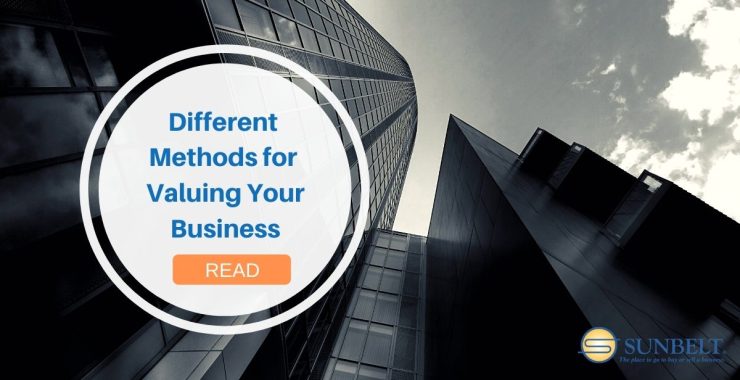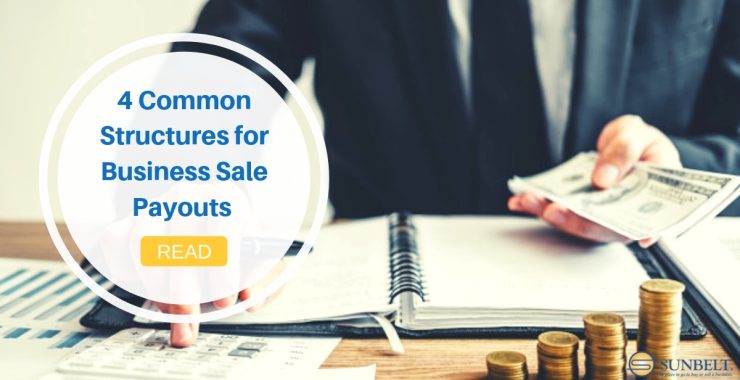Selling A Business
Four Ways to Properly Value a Business You Want to Buy
When you’re looking to buy a business, you want to make sure that you are getting the best price possible. This is important in any type of negotiation, but especially so when you’re purchasing a business, as the purchase price can go a long way in determining if you’re successful. If you paid too much for the business, then it may be more difficult for you to reach that “break even” point and eventually make a profit.
That’s why understanding how to properly value a business is as important, if not more so, when you’re buying a business than when you’re selling one. So, what methods and metrics should you use when you’re trying to accurately project what a business you’re buying is worth?
Here are four methods and steps you can take to arrive at a purchase price that is fair to both you and the seller, and also ensures your future success.
1. Figure out the SDE
One of the most popular metrics you can use to determine the value of a business is to use Seller’s Discretionary Earnings. This method is especially pertinent and effective if you’re buying a small- to medium-sized business. Much larger businesses would use a similar metric called EBITDA.
SDE will attempt to get at the true value of a business. It includes business expenses such as income that is reported to the IRS as well as non-cash expenses. Basically, SDE will calculate what the actual revenue of a business is.
In addition, with SDE, you’ll also take into consideration any salary and benefits that owners of the company take. These data points are not included in EBITDA. What this allows you to do is understand what the business truly costs to run, since a lot of owners expense some personal benefits.
In many negotiations, the business owner will provide you with their SDE, but you should ask them for a full explanation of how they came up with that calculation so you can know whether it includes everything you’ll need to run the business.
2. Integrate Multiples into the SDE
The SDE by itself isn’t the final value of the business. Most business owners aren’t going to want to sell for the true value of what their business is worth today. They’re going to want to get compensated in some way for what the business’ future potential is as well — since they put in so much work building the business to what it is today.
That’s where multiples come in. Multiples are basically a rate by which you’ll multiply the SDE to come to a selling value. The exact multiple you should use is dependent on a number of factors. These factors could include things such as the industry, the market volatility of that industry, the business location, the size of the company and what risks, if any, there are with transferring ownership of the business.
Negotiating the multiple is often the most challenging part of a business negotiation. The seller will likely want the highest multiple possible, while you as the buyer will want the lowest one.
3. Review Important Documents
The seller should be preparing you a list of important financial documents for you to review when you’re in negotiations to buy a business. These should include recent P&L (Profit & Loss) statements, tax returns and filings, an overview of their business and finances, as well as any licenses, deeds, contracts and leases.
You should use these documents as guidelines when you’re trying to come up with a price that you think would work for you as the buyer. If there are a lot of costs — or upcoming expenses — that you’ll have to shoulder, then you could factor that into the equation.
If, for example, the company leases the office space they’re in and the lease is up soon, you’ll need to research how much rent will be on a lease re-up, or look into new potential locations. You’ll also want to factor in how the current owner runs the business compared to how you plan to run the business, and if that would mean you taking on extra — or fewer — expenses.
4. Examine the Other Assets
Businesses have a number of assets that often don’t show up on the important financial documents. These can include tangible items such as real estate, equipment and/or inventory. They can also include intangible items such as the business’ brand (and reputation); any patents, trademarks or copyrights; subscribers; and even intellectual property.
The owner of the business is going to want to get value in the sale from these assets, both tangible and intangible. The tangible assets are usually easier to calculate, since they can be based on true value.
The intangible assets are tougher, and are oftentimes the source of frustration. Business owners are naturally going to value the blood, sweat and tears they put into the business over the years more so than you will. And the intangible assets are where that’s going to come through the most.
The key to successfully negotiating a good price for you as the buyer is to recognize and understand there is actual value in these intangible assets, without going overboard.
These are just a few of the methods and metrics you can use when you’re trying to come up with a fair and accurate value for a business you’re trying to buy. Purchase price is often a key indicator of how well you will do when you own the business, so make sure you negotiate the best price possible.
Sunbelt Business Brokers of West Palm Beach can help you prepare to sell your creative business in South Florida, guiding you from listing to closing. If you’re considering selling your business, get in touch with us today for a confidential, no obligation conversation.




